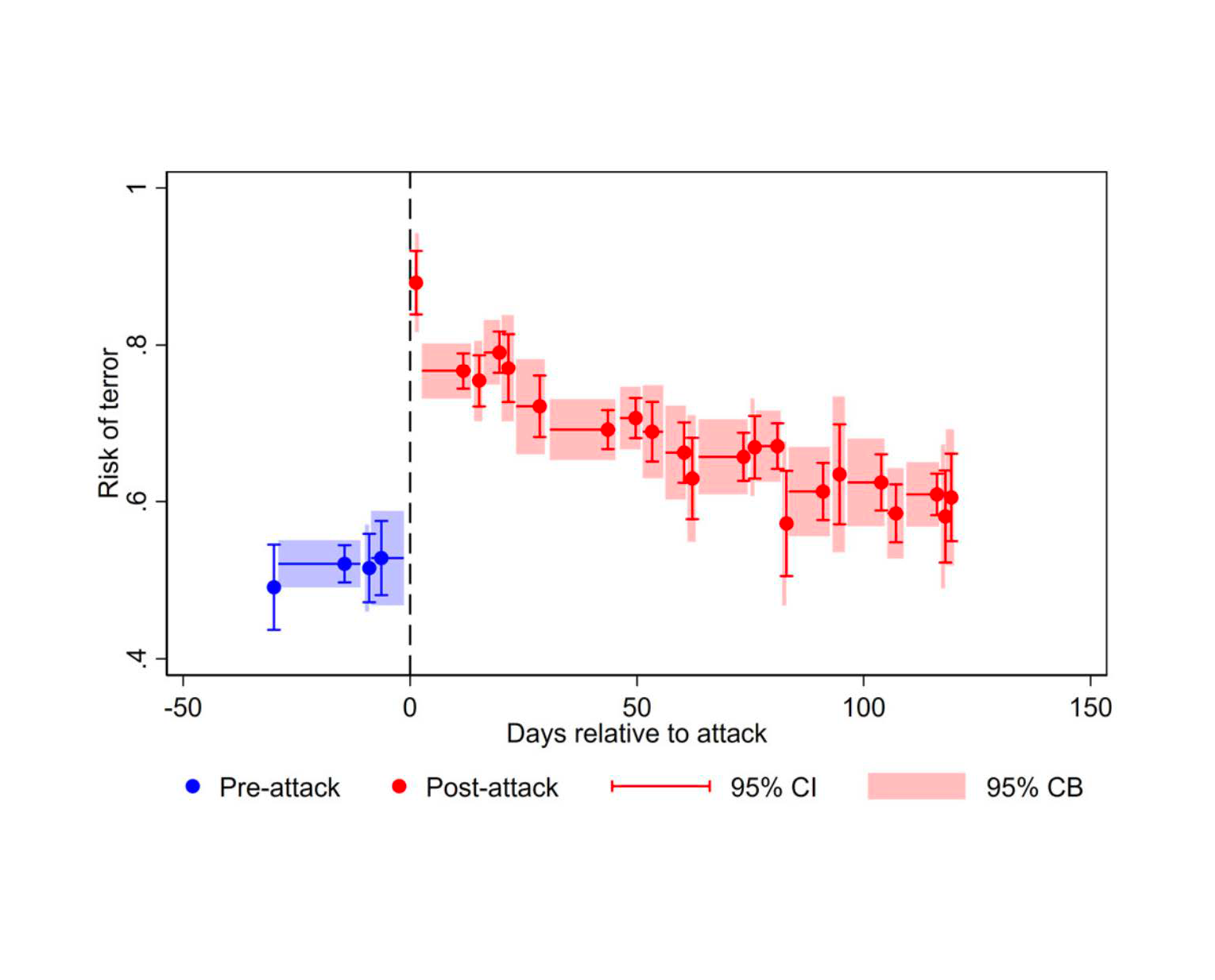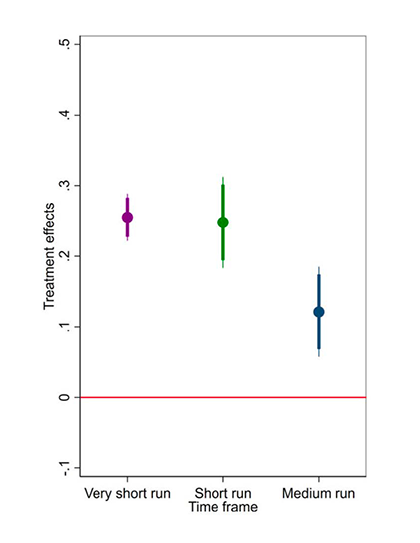Research Brief
The prolonged effects of terrorism
A closer look
Terrorist violence has a profound influence on social attitudes, including trust in governmental institutions and attitudes towards migration and civil freedoms. Acts of terrorism cause citizens to experience a complex range of negative emotions, including anxiety, anger, sorrow, and a sense of vulnerability and helplessness. Research on the magnitude and duration of these effects may play an important role in efforts to build peace and reduce violence in the world.
Deadly terror attacks cause heightened risk perceptions and negative emotional responses in the public
These effects are sustained over time and up to 120 days after an attack
Large-scale attacks cause a long-lasting shift in risk assessments and emotions, the corresponding effect of smaller-scale terrorism incidents appears to subside within one month
Overall, the impacts of terrorism do not easily fade away
We study the effects of terrorism, in particular their duration. Most existing studies track public reactions to terrorism within 3 and 30 days after a single incident. To explore the temporal effects of terror, we rely on a large dataset of uninterrupted, individual-level observations across 6 incidents (three deadly and three foiled). We focus on the ‘first order’ effects, specifically the perceived risk of terrorism and the emotions experienced following an attack, as these drive ‘second order’ effects like policy preferences and mental health.
We analyse responses from British citizens in the Continuous Monitory Survey, from individuals interviewed just before and after three major terrorist attacks: the London bombings (7 July 2005), the Glasgow airport attack (30 June 2007), and the Lee Rigby murder (22 May 2013). Comparing responses before and after these attacks allows us to establish a causal relationship. We assume that the timing of the attacks is unexpected (exogenous) and randomly assigned relative to survey interview times, ensuring a control (pre-attack) and a treatment (post-attack) group. While we must account for potential bias from other post-attack events when exploring how effects evolve over time, our focus on first-order effects mitigates this. No other major terrorist incident occurs within 120 days after the sampled attacks.
Figure 1 presents the non-parametric conditional relationship between the perceptions of terrorism risk and the treatment status. Exposure to a new terrorist attack leads to significant increase in risk perception from 0.52 to 0.75 in the first few days. Respondents’ perception of heightened risk begins to fall in the medium-run, but the value remains significantly higher than that of the control group. In fact, the temporal dynamics reveal a level-shift upwards that is sustained over time. Note also the flat pre-trend.
Figure 1 | Risk of terror, non-parametric estimates

Source: Authors elaboration. Cattaneo et al. 2019
In Figure 2, we present coefficient estimates from three separate regressions over pre-determined time frames: the very short run (one week after the attack), the short run (the next three weeks); and the medium run (the next three months). The results show an approximately 50% higher perception of risk attributable to the occurrence of a terrorist attack, which is large and highly statistically significant. Even in the medium run, the values remain considerably higher than pre-treatment levels, suggesting that people continue to feel another attack is possible for a long time.
Figure 2 | Risk of terror, main results

Emotional response to terrorism
Figure 3 shows the results for the emotional reactions of those surveyed. The evolution of negative feelings mirrors the dynamics of risk assessments, with a sharp increase in the first seven days after the attacks, which persists for one month before declining in the next ninety days.
Figure 3 | Negative emotions, main results

Our results may exhibit greater impact and longevity in incidents of higher consequence, characterized by the number of victims or extensive national media attention. To test this, we repeat the analysis for each sampled attack separately. The results confirm our expectations, with the 2005 London bombings showing longer-lasting effects than the other two smaller attacks.
Policymakers are likely to confront increased risk perceptions and emotional reactions long after a terrorist attack
Terrorism can contribute to prejudiced attitudes towards out-groups and vulnerable communities
Downstream effects on individual wellbeing and mental health are likely
High levels of anger towards terrorists can result in calls for more aggressive military actions which seek to retaliate against an identifiable target
Beyond the immediate security concerns, policymakers should weigh these psychological and societal consequences when considering their response
In summary, our study reveals that the impact of terrorism endures long after the initial incident, affecting risk perception and emotions. Policymakers must consider these lasting effects when crafting responses to terrorism, as they influence public attitudes, prejudice, wellbeing, and calls for action. This time-focused perspective is essential for developing effective policies and responses to terrorism.
 Join the network
Join the network